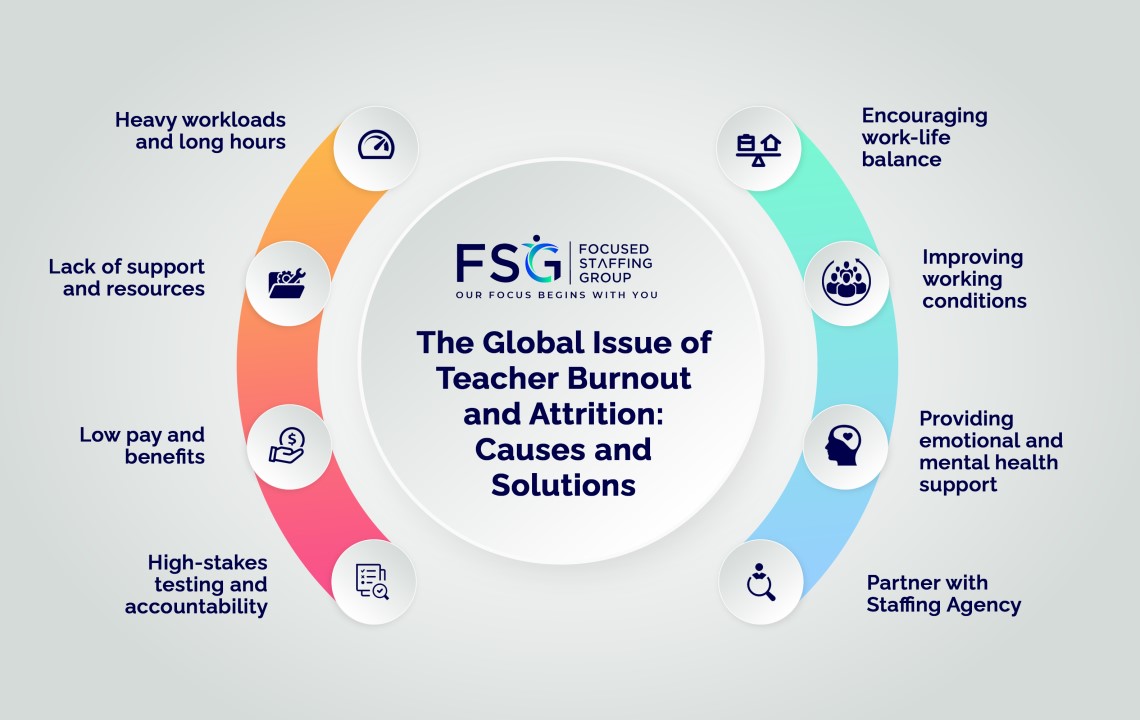
5 Ways School Leaders And Administrators Can Help Prevent Teacher Burnout
What significant steps can school administrators take to counteract teachers' dissatisfaction, disillusionment, and potential burnout? As you organize for the upcoming academic year and explore methods to enhance the team's working culture, take into account these effective tactics that convey to your instructors that they are appreciated, acknowledged, and cherished. The secret to preventing teacher burnout is identifying the warning indicators early on and fostering a culture of resilience within your institution.
What Is Teacher Burnout?
When educators have used up all of their resources to the point where they don't think they feel exhausted, they get burned out. Frequently, the instructor is the depleted resource. Instructors frequently feel that they have reached their breaking point and are at their lowest.
The epidemic has led to an upsurge in teacher burnout. More hours have been spent by teachers than in the past due to the shift from traditional classrooms to remote learning, last-minute changes in schedules, and high demands and unpredictability in the classroom.
There is no question that teacher demoralization and burnout are on the rise. However, these two concepts are not synonymous. Teachers may treat weariness, and burnout is more closely related to exhaustion. Teacher burnout is frequently thought to be transient.
Do you follow us on Social Media? We regularly share upgraded educational content, tips, feedback, and more. Check us out by clicking the profiles here - Facebook / Twitter / LinkedIn / Pinterest / Instagram / YouTube
What Are The Signs And Symptoms Of Teacher Burnout?

You should keep an eye out for a few telltale indications and symptoms of teacher burnout in your facility. Some of the most common signs are:
- Short-Tempered Or Irritability
Until they aren't exhausted, teachers are frequently patient. Let's say you see a sudden shift in your colleague's demeanor to one of rage and irritation. Usually, it's time to take a step back and pause. - Not Socially Engaged
Do you or a fellow employee find it difficult to interact socially now? It's possible that you don't want to attend happy hour or have lunch with another instructor. Your workmates may be pushing you away due to burnout. - Exhaustion And Fatigue
Teaching is a demanding profession, so this one is difficult. But burnout may be the cause if you or a coworker never seem to be able to get any sleep. - Brain Fog
Can you focus on the daily things that are important to you? How often do you forget at work or home? If you do then the stress has probably clouded your judgement. - Appetite Change
A shift in appetite might be a physical sign of job dissatisfaction. Other physical symptoms like headaches and stomachaches could also occur.
How To Prevent Teacher Burnout?
Here are 5 ways you as school administrators or leaders can alleviate your staff's stress if you find them struggling:
- Extracurricular Stress
Do any educators in your building appear to be doing everything? Make an effort to survey the personnel and ensure that extracurricular duties are distributed fairly. Many times, instructors spend so much time on after-school events that they are unable to catch up in the classroom. - Mentoring
For teachers to advance in their professions, mentorship from peers is essential. Administrators can design mentoring programs that facilitate practical conversations between novice and seasoned educators. Administrators have the authority to design goal-oriented training for mentor groups and to organize programs that take place in real classrooms.
- Autonomy
Do your educators think they have enough control throughout a typical class? Look for opportunities to give your employees additional autonomy. This may not manifest itself in the form of curricula and evaluations. However, make an effort to delegate authority for tasks like professional development, lesson planning, and hall passes. - Culture Check
Burnout spreads easily. Examine the culture of your school. Is there a method for educators to express their worries in a secure setting? If not, educators will start ranting in private. This is where burnout turns into a wildfire. Establish policies that allow administrators to hear teachers out and respond to their concerns. - Provide The Right Tools Input And Feedback
To handle the transition to remote learning, teachers lacked the necessary resources. Obtain resources to support your teachers if you observe a need in your school. You should actively seek teacher involvement and feedback when selecting a new curriculum or considering the launch of new programs.
Administrators can evaluate materials with a rotating committee or group to ensure that all voices are heard. Additionally, it lets instructors realize that their expertise and professional perspective are valued. By valuing staff participation in this way, decision-making involves teachers and offers them a voice. This ensures a greater chance of new efforts succeeding and helps lessen teacher fatigue.
Protect Your Teacher’s Well-Being
As you know there are many contributing reasons to burnout. For educators to pursue their passion, systemic change needs to take place. But in the meantime, you also need to ensure the well-being of the teachers while they are adapting to these changes. Along with the tips you can also pursue a MA in Education with Leadership and Administration to brush up your leadership skills and support your teachers better.
We believe education should be accessible for everyone. That’s why we don’t charge for our blogs. Find the right course that will help you in your career with us, contact us at +66-21055721. You can mail us at act@asiancollegeofteachers.com

